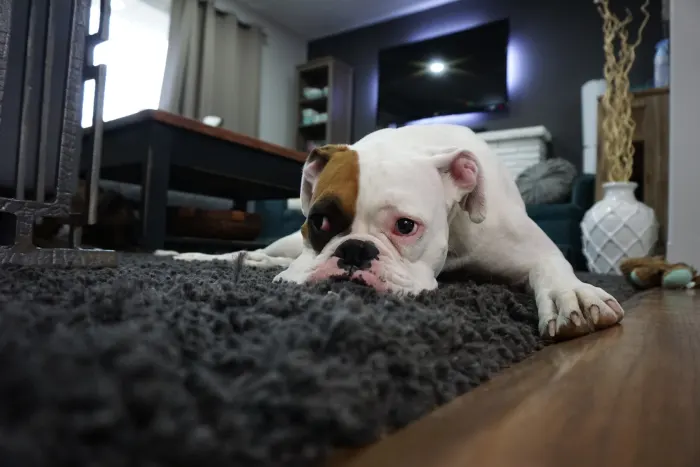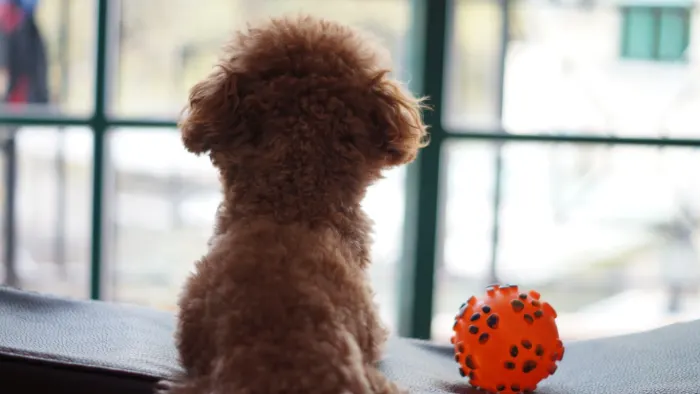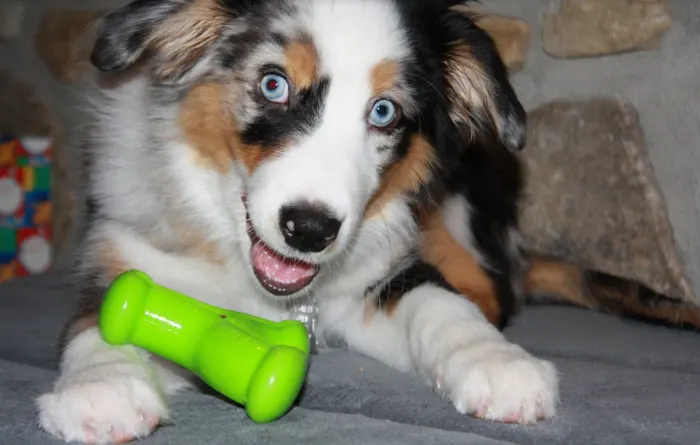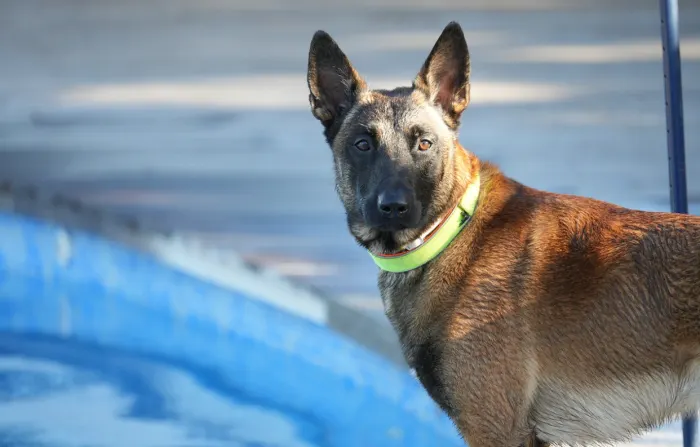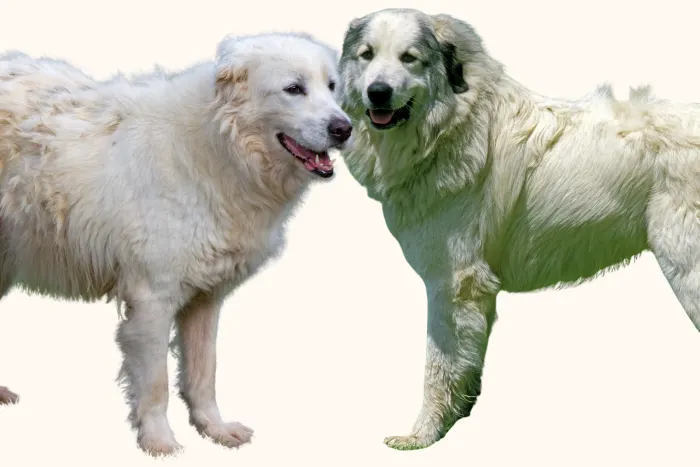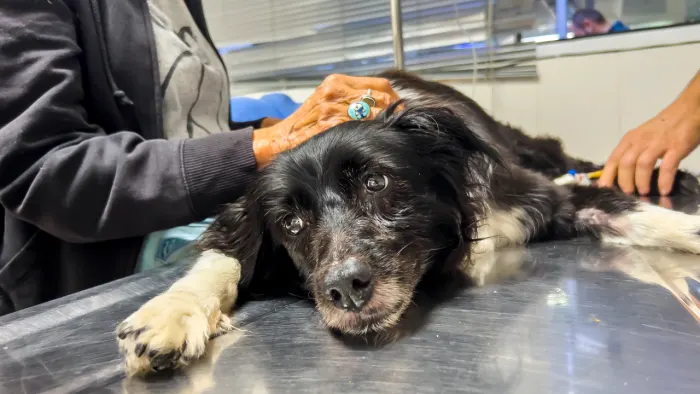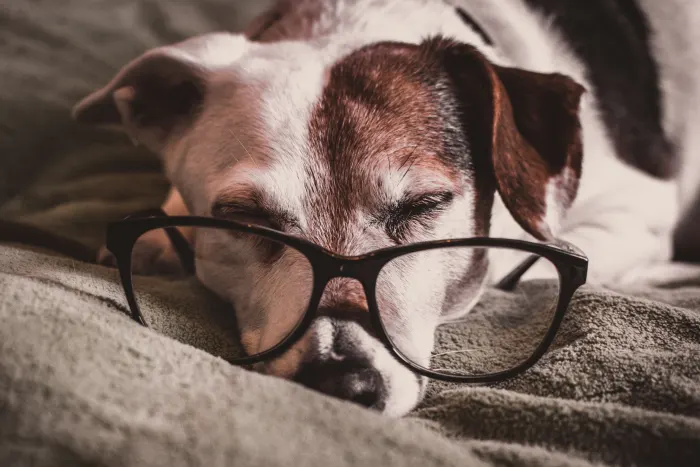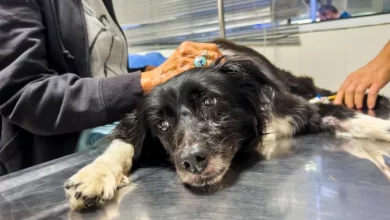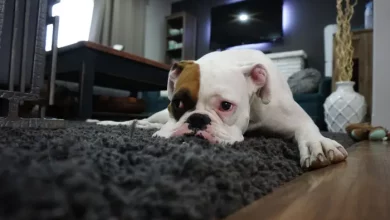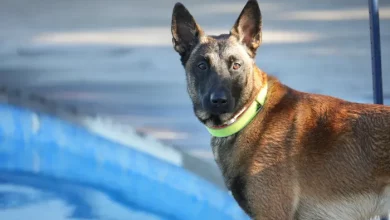Knowing more about dog breeds is a great way to improve your knowledge.
It’s important that you put your head above your heart when bringing a new puppy into your home.
Each dog breed has its own unique quirks and traits. Some of these traits are more difficult to understand than others.
Research is essential for Australian Shepherds, in particular, to understand the breed.
Bring home an Australian Shepherd without prior knowledge, and you can be in for a very overwhelming experience.
They are high-energy and need constant stimulation. These pups are wired to have a natural instinct for nipping. If you’re unprepared, you might feel frustrated, defeated, and at a loss for what to do.
Knowledge is ultimately power. You’ll find that certain traits are easier to accept if you spend some time researching the breed.
The joy and love that your dog will bring to your life will repay you for the time you spent learning about them.
The History of the Breed
Australian Shepherds are bred for herding sheep and cattle on farms and ranches.
Australian Shepherds have a natural instinct to herd animals. Intrigued? Discover several herding behaviors in dogs.
The main task of an Aussie was to follow sheep and cattle in a circle while nipping their heels.
Australian Shepherds can be described as versatile herders, known for their stamina and ability to work under a variety of conditions, including terrain and weather.
They are constantly alert and ready to explore. The Aussie thrives on keeping the house or farm in order. They also enjoy playing the role of fun police at dog parks.
Do Australian Shepherd puppies bite a lot?
Australian Shepherd pups are known to be “little land sharks.”
Australian Shepherd puppies may bite more than other puppies. It’s because they have a number of traits that they were inculcated through generations of selective breeding.
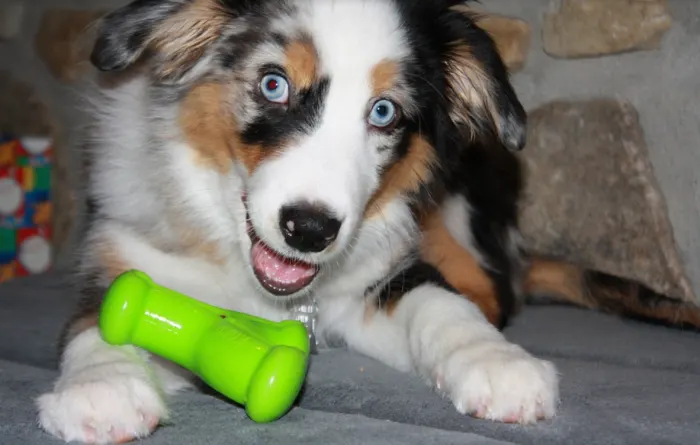
Recommended for You
These dogs, which have a long history of herding sheep, are attracted by movement. They will chase cars, bicycles, joggers, and even cats or children.
Aussies also have a hypersensitivity to light, shadows, and sounds. Hypersensitivity to movement makes them nip at people’s feet, legs, or other objects.
Australian Shepherd dog owners often struggle to walk from A to B without a land-shark puppy attached to their legs.
These pups are also very energetic. It is important to teach these pups how to relax in a modern setting, as opposed to working 18 hours a day on a farm.
How can you reduce the biting of an Australian Shepherd puppy?
You will need to tackle the problem from different angles if you want to reduce your dog’s biting.
The biting is often the result of teething. In general, puppies’ teeth are between two and seven months old.
Chewing can relieve discomfort caused by the adult teeth cutting through the gums.
There is a good amount of internal reinforcement at work when these puppies bite.
There are also other reinforcers that may be at work when nipping. These include attention, interaction with the owner, and performing instinctive behaviors. This can cause the behavior to continue.
It may be necessary to combine several strategies to decrease your Australian Shepherd’s tendency to bite.
How to stop your Australian Shepherd puppy from biting
Here’s the meaty section you’ve been waiting for, but first, I must point out something important. It’s not something you can solve overnight. Your puppy needs to develop enough impulse control and will require time and repetition to stop biting.
Never believe sources who claim that your puppy can be potty-trained in one week or that you will fix a problem with behavior in a certain amount of time. Be wary of any guarantees made about the results of behavior modification or training.
When it comes to animal care, there are no guarantees. The speed at which a puppy learns to stop biting is highly variable because so many factors come into play.
After all of this, I have outlined a few strategies to help reduce the biting behavior in your Australian Shepherd.
- Toys for Children of All Ages
Make sure that your Aussie is surrounded by a variety of toys with different textures. Do not forget to buy him some teething toys which can help during the puppy teething phase (make sure that they are specifically designed for teething puppies).
When it comes to dog toys, variety is key. To keep your puppy’s interest, rotate his toys randomly. Keep some of the toys hidden and then represent them randomly. They’ll be more interesting if they are a little bit different.
- Invest in food puzzles.
Food puzzle toys are a great way to keep your puppy busy and occupied for a while. You can use this to regain your sanity when watching TV or catching up on social media.
The Kong Company produces some of my favorite food puzzles. The Puppy Kong has a hollowed center that is designed specifically for teething puppies. You can fill it with kibble mixed in with canned dog food, peanut butter, or cream cheese (but not the sugar-free variety, as xylitol could be life-threatening for dogs). Kong also produces delicacy pastes that are available in spray cans and can be used for quickly stuffing a Kong.
You can give your dog a Kong that is filled with kibble that has been soaked in low-sodium water or broth. Make sure the kibble does not contain garlic or onions.
I also love the Kong Wobbler. The Kong Wobbler has survived the teeth of my Rottweilers and countless dogs that we have brought over for training and boarding. Fill it with kibble, and your dog will be busy for a while trying to get all of the kibble from it.
Tip: If you put some cookies in the Kong Wobbler, they will cause the kibble to come out more slowly, resulting in a longer-lasting challenge.
- Create your “Safe Zone”
Barriers such as baby gates will allow you to walk away from an Australian Shepherd when it is in “green monster” mode.
- Redirections at a moment’s notice
When you see your dog approaching with the intent to bite you, throw him a ball or a kibble in the opposite direction. Repeat this process several times to turn it into a game.
It is important to catch him before he bites. You’ll find it harder to distract your dog once he has latched onto your pants, shoes, or other body parts.
If you redirect your dog after he’s latched onto something and give him a treat or toy, it could lead to a “behavior chain.” When an unwanted behavior is unintentionally reinforced, it can lead to a chain of behaviors.
In this situation, the dog may learn that “Every time I bite, my owner gives a treat or a toy.” “Biting is good for you!” Biting increases, not decreases. This is not what you want to happen.
It’s better to catch your dog beforeit nips so you can reinforce the non-nipping behavior.
You will need to be attentive and responsive. I carry in my pocket or treat bag a portion (of the daily ratio) of kibble and treats for nippy puppies so I can quickly redirect them at any time.
- Provide Legitimate Outlets
We can’t stop a puppy from biting. It’s a natural behavior for puppies to bite and play with their environment. We can provide outlets for their behavior without having to be involved directly.
Let’s say that your dog loves to bite when you are in the backyard. Drag a long toy on the ground. You will be amazed at how much fun your puppy has!
You can also invest in a “flirt pole.” A flirt pole looks like a fishing rod with a toy on a string. This is irresistible to puppies, and they will bite your legs and feet instead.
When working with nippy pups, I carry a flirt pole over my shoulder, ready to be used as needed. This tool has even been used to bring my puppies inside after a fun day in the backyard. This tool is great for dogs who are outdoorsy and for puppies that get lost or don’t know how to respond reliably to their recall.
Then, once they are back home, a handful of kibble will be thrown on the floor for them to find in a treasure hunt style!
If you are going to use a ‘flirt pole,’ I recommend that your dog learns how to drop and leave the pole. This will add structure to the game.
- Train Alternate Behaviors
The above exercise can be a great way to stop nipping behaviors that are problematic. However, you should also aim to reinforce a desired behavior. Introduce the kibble-toss game!
Once you’ve mastered these behaviors, you can use them to stop your Australian dog from biting you. Reward him with kibble, or treat, after he has sat, lied down, or done hand targets.
You should notice that these behaviors will increase over time and eventually surpass the nipping.
This is a game that offers a win/win situation. Not only are you rewarding your Aussie for not biting, but you’re also getting your dog a good workout while he jumps between you and your treats.
- Turn Into a Lamppost
What happens if you are caught off guard? What if you’re walking around the yard with your hands full, and your puppy comes up to you? If this happens, you should freeze and stop moving, completely ignoring the puppy. Imagine turning into a lamppost!
Most pups lose interest because they are more interested in the “resistance we provide” when moving since this allows them to play tug-and-latch even more.
Wearing tall Wellington boots with extra padding around the knees may help if you have a hard time freezing due to painful nipping. Rubber boots are a favorite target for most pups, but they quickly get bored of them.
- How to Get your puppy used to being touched
Remember when we discussed that it is important to use a multifaceted approach to combat puppy-nipping behavior? Here’s some important information: Many dogs who bite when we pet them do so because they have “touch intolerance.”
This is often the case when people have not learned to tolerate (and sometimes even enjoy!) being touched. This happens when they have not learned to tolerate (and even enjoy!) being touched. They are trying to stop you from touching them because they don’t like it. We want our dogs to be comfortable being touched. You can start with these puppy handling exercises: 9 body handling exercises for puppies.
- Teach your puppy to be gentle with human skin.
All puppies should learn to control their bite. They must learn that the skin of humans is very delicate, and they can hurt us if they use their needle-sharp incisors.
Two guides will help you: How to teach your puppy to bite with restraint and how to teach him to accept treats gently.
Teach Your Puppy Impulse Controlis beneficial for puppies to learn how to control their emotions and frustration tolerance. Be patient if your Aussie puppy is young. It takes them time to learn this. Here are ten games that help dogs control their impulses.
- Train with the “Watch and Resist Games”
This game is one I created last year while training an English Setter that was super-nippy. Your puppy will master impulse control and delayed gratification. This game is best for puppies who know how to sit and remain.
Then I slowly move my hands away from the face of the puppy. I click my clicker or verbally praise the puppy for remaining calm despite my movements.
If the dog breaks the stay or tries nipping, I will say, “Oops,” which signals that there won’t be any rewards. Then, we can try it again with a lower standard and a less difficult exercise.
After the puppy has reached a certain level, I will raise the criteria, work on faster and closer movements, and also resist the temptation to grab things such as jewelry, scarves, or stuffed toys dangled in front of their faces.
- How to Prevent Your Puppy from Getting Cranky
Did you know that puppies need a lot of sleep? Did you know?
When puppies become cranky, they often exhibit several unwanted behaviors, such as mounting, jumping, and, yes, even more nipping.
You should take action to stop your puppy from becoming grumpy and moody. You will find some tips on how to relax your Australian Shepherd puppy and help it take a nap. Do puppies get cranky if they are tired?
- Capture Calmness
You can make it a habit to capture your Aussie’s calm behavior by saying, “Good boy” in a calm voice every time you see him settling down on his mat or acting calmly. When he is in a relaxed Zen-like mood, you can give him a few kibbles. Skip the treats, as they may be too exciting, and jolt him out of his relaxed state.
- Avoid Harsh Methods
Avoid using harsh methods to stop the biting of your Aussie puppy. No yelling, no physical power struggles like alpha rolls or muzzle grabs.
This method can teach your dog to fear you. Your puppy might bite out of play and then start to bite out of defense, resulting in trust issues and other problematic behaviors.
The content of this page is accurate to the best knowledge of the author and does not replace formal, individualized advice given by a qualified professional.

